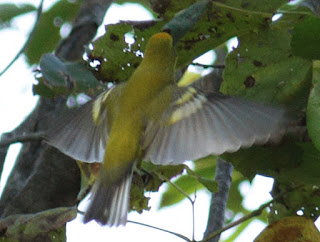Reeves's Pheasant x Ring-necked Pheasant (var. tenebrosus) hybrid, Threxton Hill (Norfolk, UK), 21st March 2015 - copyright Dave Appleton
(photo ID: 2154)
A few more updates during the past couple of weeks. Thanks to all who have contributed photos and/or insights and if you haven't done yet then please get in touch. You can comment on any thread if you have anything to say about the hybrids or topics covered, and if you have any photos you would be willing for us to use, please let us know (e.g. by emailing us).
Recent updates are below but remember you can find an index list linking you to all the bird hybrids featured so far here:
And an index list of all the bird hybrid topics covered so far here:
So, the recent updates are:
New bird hybrid pages added for:
- Lesser White-fronted Goose x Canada Goose
- Lesser White-fronted Goose x Cackling Goose
- Northern Pintail x Red-crested Pochard
- Bufflehead x Common Goldeneye
- Barrow's Goldeneye x Hooded Merganser
- Little Egret x Western Reef-Heron
- Pied Stilt x Black Stilt
- American Oystercatcher x Blackish Oystercatcher
- Galah x Little Corella
- Philadelphia Vireo x Red-eyed Vireo
- Blue-winged Warbler x Golden-winged Warbler
New photos added to:
- Greylag Goose x Canada Goose
- domestic Greylag Goose x Canada Goose
- Snow Goose x Canada Goose
- Snow Goose x Cackling Goose
- Ross's Goose x Cackling Goose
- Mute Swan x Whooper Swan
- Muscovy Duck x Mallard
- Wood Duck x Mallard
- Common Pochard x Ferruginous Duck
- Reeves's Pheasant x Ring-necked Pheasant
- American Herring Gull x Glaucous Gull
- Saker Falcon x Gyrfalcon
- White-crowned Sparrow x Golden-crowned Sparrow
Text amended in:
Information about other Aythya x Oxyura hybrids updated and corrected on following bird hybrid page:
Text amended in Bird Hybrid Topic page for:
Information and photo added to bird hybrid topic page:
Don't forget you can now follow us on Twitter at @BirdHybrids
Enjoy browsing - and please do contribute where you can!

%2B(9)%2BL.JPG)

















































